|
| In Cambodia most people who die are cremated within 36 hours. Partly because many people cannot arrive for the funeral in such a short time, another ceremony is held on the seventh day after death. It is very similar to the actual funeral ceremony except that the body is not present. Metry, a Maryknoll staff member of many years, was cremated in less than 24 hours, and then on the seventh day, her ashes were interred in a stupa (mausoleum) on the grounds of the parish church she attended. |
 |
|
| For the seventh-day ceremony, a small shrine was set up in the church sanctuary with a photograph of Metry in the center and next to the paschal candle, the symbol of Jesus' victory over sin and death. |
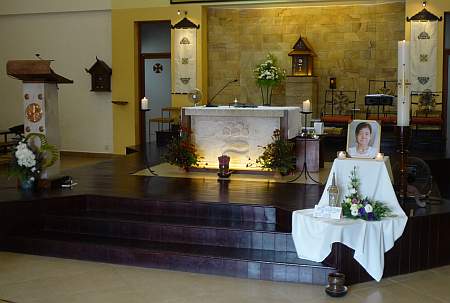 |
| At the beginning of the ceremony, Metry's two sons lit incense sticks and placed them before her picture. |
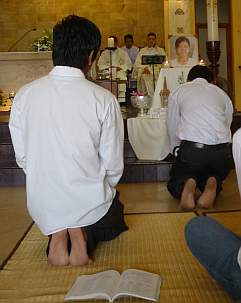 |
| Fr. Mario Ghezzi, the pastor of the Church of the Child Jesus in Boeung Tum Pun, presided at both the funeral and the seventh-day ceremony. |
 |
| After the mass, the congregation processed to the front part of the church property where a stupa is located to hold the ashes of those who have been cremated. |
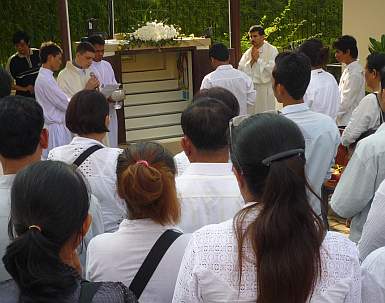 |
| EAch person present then took lit incense sticks and placed them before the urn in the stupa. |
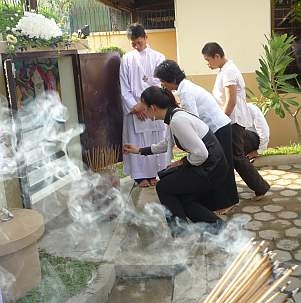 |
| Metry is the first person to have her ashes placed in this stupa. It has just been constructed and small murals on the inside walls are not yet completed. |
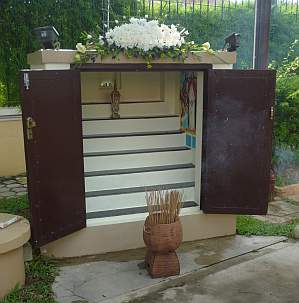 |
| Every Cambodian funeral ceremony, whether it is at the time of the cremation or seven days or 30 days or 100 days or several years later, will have a meal for all those who attend. It is part of the culture to offer a donation of money to cover the cost of the meal. |
 |
|
|